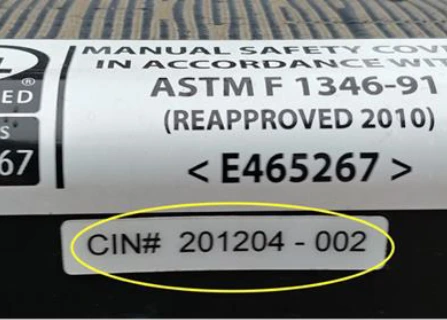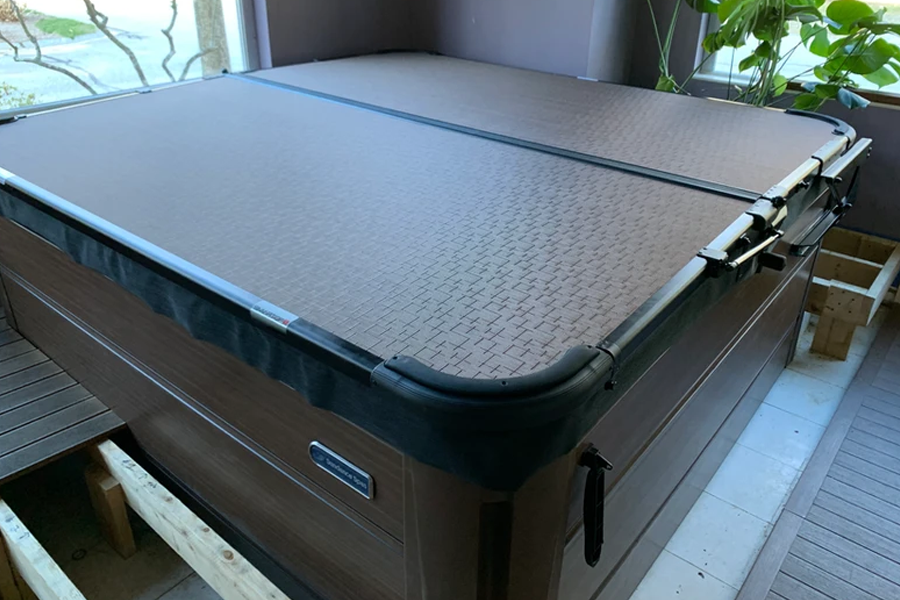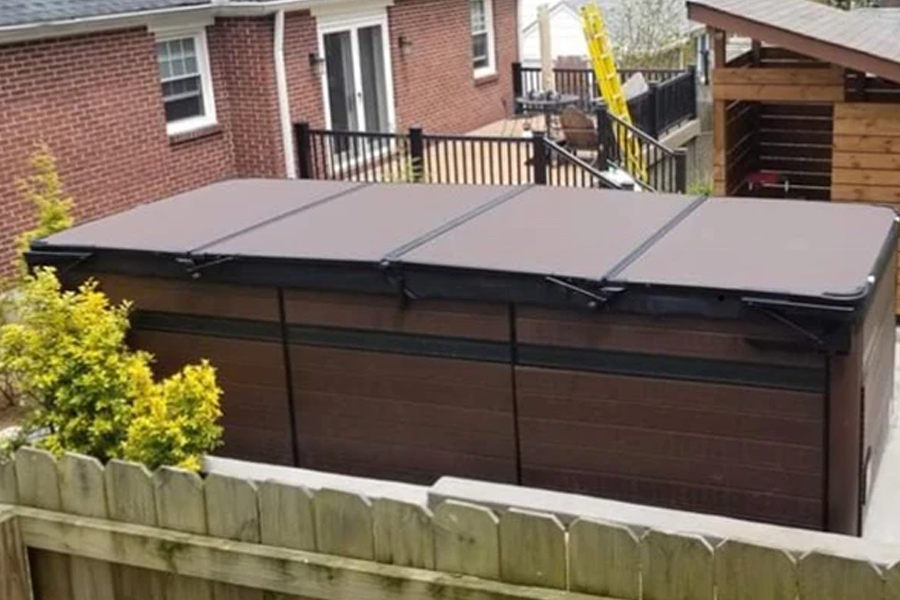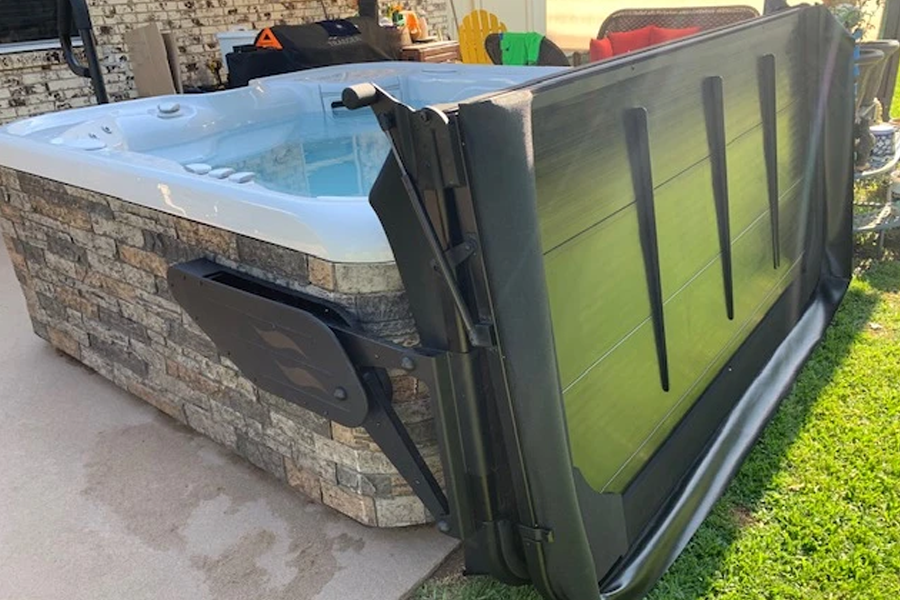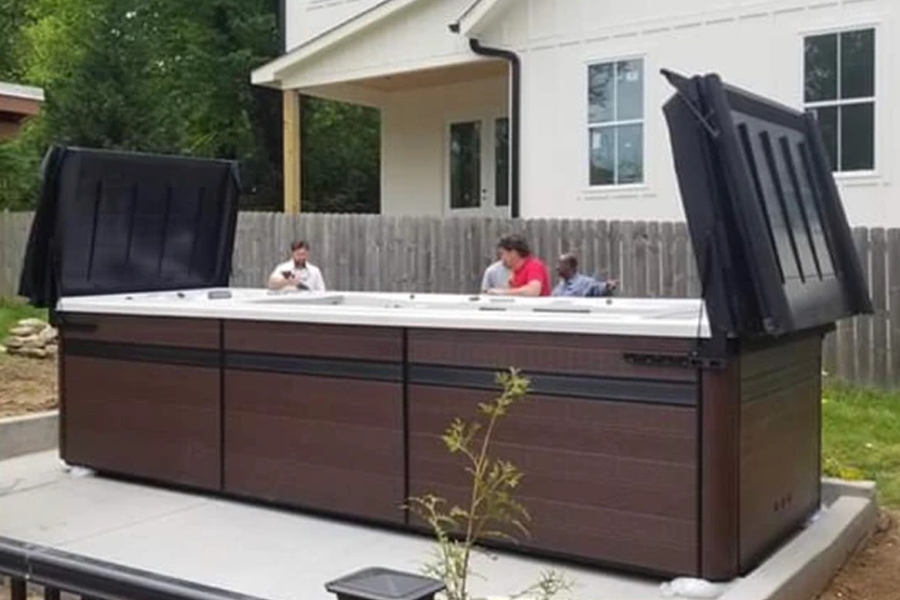A hot tub is a wonderful addition to any home, providing relaxation and enjoyment. However, maintaining your hot tub, especially its cover, ensures longevity and efficiency. A well-fitting cover for your hot tub safeguards against dirt and filth and helps retain heat, resulting in lower energy bills. This web blog will cover the major threats to your hot tub spa cover and explain how to properly secure it.
Major Threats to Your Hot Tub Cover
The first step in protecting your hot tub cover is understanding its threats. Some of the most common issues that can damage your cover are mentioned here:
1. UV Damage
UV radiation from the sun is one of the hot tub cover’s biggest enemies. After some time, the material of your cover may start to lose its color and crack due to exposure to ultraviolet rays. This affects the aesthetics of your hot tub and compromises its ability to insulate and protect the spa.
2. Weather Elements
Adverse weather conditions, like rain, snow, and wind, can damage your hot tub cover. Water accumulates on the cover if it rains heavily, while snow accumulation adds significant weight. Additionally, wind can cause the cover to flap, leading to potential tears or damage. Also, hot or cold extremes can lead to expansion or contraction forces on materials, causing wear and tear.
3. Chemical Exposure
Chlorine and bromine are used in hot tubs to keep the water quality. These chemicals can corrode the cover if used improperly, especially if they come into direct contact. A mismatch in water chemistry can increase moisture levels, leading to mold and mildew.
4. Physical Damage
Your hot tub cover may also have physical damage from placing heavy objects on it, pets jumping over, or even hitting with gardening tools or furniture mistakenly. Such damage can lead to tears, cracks, or even complete breakage, necessitating costly replacements.
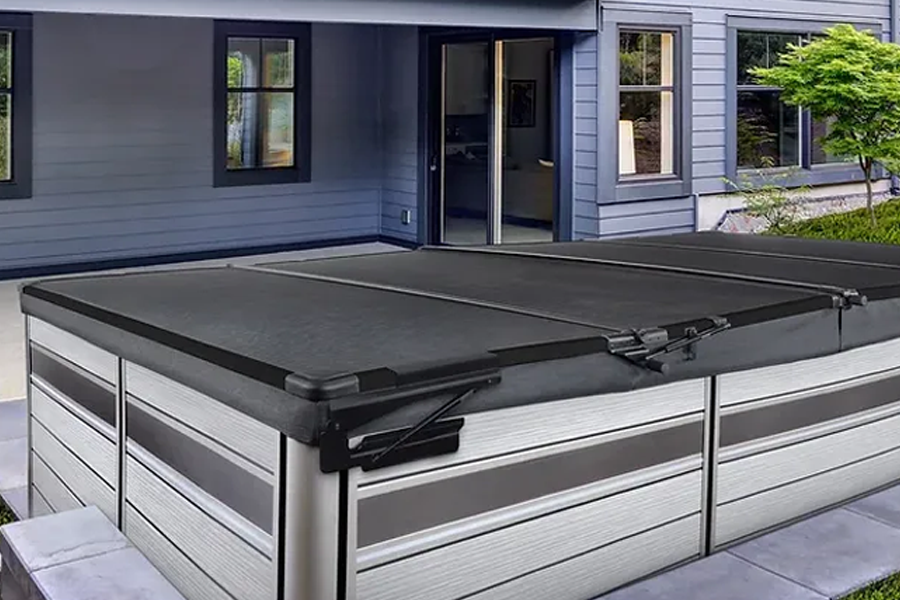
How to Protect Your Hot Tub Cover?
We’ve addressed the major threats; now it’s time to take action and protect your hot tub cover with some effective measures.
1. Invest in a Quality Cover
Investing in a high-quality hot tub cover is the first line of defense. Search for UV-resistant materials that can withstand severe weather conditions. They include the following features:
- UV-Resistant Materials- They help prevent fading and cracking with covers made from durable vinyl that resist ultraviolet rays.
- Insulation- A well-insulated tub cover keeps your hot tub warm and prevents fluctuations in the temperature.
- Secure Fasteners- Keep your cover strapped or fastened down securely so it won’t blow off or flap wildly in high winds, which could cause wear and tear.
2. Regular Maintenance and Cleaning
Regular cleaning of the hot tub cover is necessary to extend its life. Take the following actions:
- Keep the Cover Clean:
– Clean the cover using a mild soap solution and a soft cloth every few months.
– Avoid harsh chemicals that may damage the material.
– Rinse thoroughly; allow it to dry completely. - Apply a Protectant: Consider using a product-specific ultraviolet protectant for hot tub covers. It will assist in protecting the material from sun-induced destruction, perpetuating a new look.
- Check the Damages: Examine the cover regularly for any cracks, tears, or seams that might have been weakened. Fix these issues as they occur to prevent further damage.
3. Use a Cover Lifter
A cover lifter is a great device that extends the life of the hot tub cover. It reduces physical stress on the cover by facilitating its easy removal and replacement. Here’s how the cover lifter does it:
- Prevents Physical Damage: It reduces the chances of an accidental tear or other damage due to the removal of the cover.
- Enhanced Usability: Making it easier for everyone, including kids and the elderly, to access the hot tub without hassle.
4. Protect from Environmental Elements
Making some effort to protect your hot tub from these elements of nature can substantially help reduce wear and tear.
- Use a Hot Tub Shelter: You can install a shelter to protect your hot tub and its cover from UV rays, rain, and snow. This will also enhance the look of your outdoor space.
- Clear Debris: Follow a regular schedule for removing leaves, snow, and other debris that collect on the cover.
5. Monitor Chemical Levels
Maintain proper water chemistry so that it stays healthy and your cover lasts long. Follow these tips:
- Testing Regularly: Test your water once a week to ensure it is balanced. Now, balance the pH, alkalinity, and sanitizer levels as required.
- Avoid Direct Contact: Avoid spilling chemicals directly on the cover. Always follow the manufacturer’s instructions regarding the use of chemicals.
Proper Hot Tub Cover Care includes taking proper care of the cover that guards it. Once you know the major threats to your vinyl and how to protect it, you’ll be enjoying your hot tub for years to come. Aside from the obvious savings of hard-earned money, regular maintenance, quality products at the right price, and proactive protection enhance the enjoyment of your overall hot tub experience. Treat your hot tub cover right, and it will keep treating you to a life of relaxation and enjoyment.
